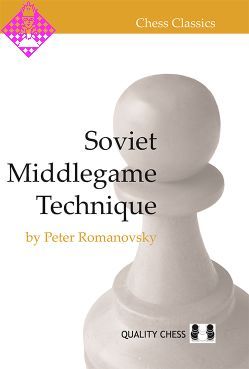Article Number
LMROMSMTG
Author
Soviet Middlegame Technique
416 pages, hardback, Quality, 1. edition 2013
From the series »Chess Classics«
Many of the classics of Soviet chess literature have struggled to see the light of day, but none more so than Soviet Middlegame Technique by Peter Romanovsky. The original version of this famous guide to the middlegame was published in 1929 when Romanovsky was Soviet Champion. Romanovsky later decided to update and improve his work. As he finished his work in 1942, World War II was underway and Romanovsky was trapped in the notorious siege of Leningrad. The author barely survived and his manuscript was lost.
Romanovsky was undeterred and finally recreated his improved book in 1960. His writing was later translated into English and published in two titles one on Planning and the other on Combinations. In this fresh translation we have included both works to create the ultimate version of a classic of Soviet chess literature.
GM Alexander Kotov on Romanovsky: ”One of the best books in the world’s chess literature.“
Romanovsky was undeterred and finally recreated his improved book in 1960. His writing was later translated into English and published in two titles one on Planning and the other on Combinations. In this fresh translation we have included both works to create the ultimate version of a classic of Soviet chess literature.
GM Alexander Kotov on Romanovsky: ”One of the best books in the world’s chess literature.“
| EAN | 9781907982491 |
|---|---|
| Weight | 820 g |
| Manufacturer | Quality |
| Width | 16.9 cm |
| Height | 24.9 cm |
| Medium | Book |
| Year of Publication | 2013 |
| Author | Peter Romanovsky |
| Series | Chess Classics |
| Language | English |
| Edition | 1 |
| ISBN-13 | 978-1-907982-49-1 |
| Pages | 416 |
| Binding | hardback |
003 Foreword by the UK Publisher
006 Key to symbols used & Bibliography
007 PART ONE: PLANNING
007 Introduction
008 (A) General System
008 (i) Basic concepts
010 (ii) Concrete scheme
018 (iii) Dynamics
025 (iv) Harmony
035 (B) Squares
035 (i) Weak point
037 (ii) The ”permanent“ knight
042 (iii) Weak squares on the sixth (third) rank
049 (iv) A few conclusions
050 (C) Open Lines
058 1. Two Wins by Wilhelm Steinitz - Their Creative and Technical Substance
066 2. Stages in a Plan - Square and File as Targets of the Plan - The Preparatory Stage - The Stage of Concrete Action - Exploitation of Gains
083 3. Play on the a-File
095 4. The Centre - Its Strategic Significance - Knights on e5 and d5 (e4 and d4) - The Pawn Centre - Attacking with the Centre Pawns - Hanging Pawns
137 5. More about Active Pawn Play - The Pawn Wedge and How to React to It - The ”Nail“ Pawn - The Phalanx of e- and f-pawns - The Pawn Storm
169 6. Battle of the Major Pieces
187 7. Manoeuvring - The Initiative
209 8. The Two Bishops
221 PART TWO: COMBINATION
221 9. What is a Combination?
223 10. The Elements of Combination - Motif and Theme
228 11. The Aesthetics of Combination: General Concepts
232 12. Idea and Technique of an ”Incarcerated King“ Combination
236 13. More about Aesthetics - Pseudo-Sacrifice - Queen Sacrifice
248 14. On the Theory of Combination - Typical Ideas
267 15. Modern History of Combinations - The Immortal Game - Masterpieces from the End of the 19th Century
291 16. Double Attack - Attacks on Pieces by Pawns
313 17. Positional Weakness as a Combinative Motif - Combinations Invited by Weaknesses in the Castled Position - Sacrifice of Bishop for Pawn on g3, h3, g6, h6
333 18. Combinative Attack with Two Bishops - Harmonious Action of Rooks on the Second and Seventh Ranks - Rook Sacrifice on g7
361 19. Harmonious Action of Rook and Bishop - The Theme of Trapping a Piece
380 20. The Interference Device in Various Combinative Schemes
389 21. How Players Think During the Game
413 Index of Names
006 Key to symbols used & Bibliography
007 PART ONE: PLANNING
007 Introduction
008 (A) General System
008 (i) Basic concepts
010 (ii) Concrete scheme
018 (iii) Dynamics
025 (iv) Harmony
035 (B) Squares
035 (i) Weak point
037 (ii) The ”permanent“ knight
042 (iii) Weak squares on the sixth (third) rank
049 (iv) A few conclusions
050 (C) Open Lines
058 1. Two Wins by Wilhelm Steinitz - Their Creative and Technical Substance
066 2. Stages in a Plan - Square and File as Targets of the Plan - The Preparatory Stage - The Stage of Concrete Action - Exploitation of Gains
083 3. Play on the a-File
095 4. The Centre - Its Strategic Significance - Knights on e5 and d5 (e4 and d4) - The Pawn Centre - Attacking with the Centre Pawns - Hanging Pawns
137 5. More about Active Pawn Play - The Pawn Wedge and How to React to It - The ”Nail“ Pawn - The Phalanx of e- and f-pawns - The Pawn Storm
169 6. Battle of the Major Pieces
187 7. Manoeuvring - The Initiative
209 8. The Two Bishops
221 PART TWO: COMBINATION
221 9. What is a Combination?
223 10. The Elements of Combination - Motif and Theme
228 11. The Aesthetics of Combination: General Concepts
232 12. Idea and Technique of an ”Incarcerated King“ Combination
236 13. More about Aesthetics - Pseudo-Sacrifice - Queen Sacrifice
248 14. On the Theory of Combination - Typical Ideas
267 15. Modern History of Combinations - The Immortal Game - Masterpieces from the End of the 19th Century
291 16. Double Attack - Attacks on Pieces by Pawns
313 17. Positional Weakness as a Combinative Motif - Combinations Invited by Weaknesses in the Castled Position - Sacrifice of Bishop for Pawn on g3, h3, g6, h6
333 18. Combinative Attack with Two Bishops - Harmonious Action of Rooks on the Second and Seventh Ranks - Rook Sacrifice on g7
361 19. Harmonious Action of Rook and Bishop - The Theme of Trapping a Piece
380 20. The Interference Device in Various Combinative Schemes
389 21. How Players Think During the Game
413 Index of Names
Mit diesem Buch wird die Reihe fortgesetzt, wertvolle, antiquarische Schachbücher wieder neu aufzulegen und so einem breiten Publikum zugänglich zu machen.
Unter diesen Vorzeichen erschienen bereits solche Klassiker wie Nimzowitschs Mein System, oder Isaacs Lipnitskys Questions of Modern Chess Theory.
Das vorliegende Werk stammt aus dem Jahre 1929, wurde aber im Laufe der Zeit (1942, 1960) nochmals überarbeitet. Romanovsky teilte sein ursprüngliches Werk bei der Übersetzung in zwei Teile auf (Planning, Combinations), in dieser neuen Fassung wurden beide Teile wieder zusammengefügt.
Peter Romanovsky war einer der Mitbegründer der sowjetischen Schachschule. Er gewann mehrmals die russische Meisterschaft, arbeitete als Trainer und Lehrer, verfasste mehrere Schachbücher und erhielt 1956 den Titel „Verdienter Trainer der UdSSR. Schachlicher Höhepunkt war die Teilnahme am ersten internationalen Turnier der UdSSR in Moskau. Dort wurde er 7.-8 unter 21 Teilnehmern (Remis u.a. gegen Capablanca, vor Rubinstein und Spielmann). Romanovsky starb 1964 mit 71 Jahren in Moskau.
Das Buch umfasst wie gesagt zwei Teile. Der erste Teil beschäftigt sich mit positionellen und der zweite Teil mit taktischen Themen. So wird eigentlich jeder Aspekt des königlichen Spiels genauer durchleuchtet und von allen Seiten betrachtet. Ich glaube, es ist nicht übertrieben zu behaupten, mit diesem Buch haben ganze Generationen von Meistern das Schachspiel näher, bzw. besser kennen gelernt. Das Buch ist zwar alt, der Inhalt aber genauso jung wie anno 1929!
Die gezeigten Beispiele im Buch sind äußerst einprägsam und lehrreich. So manche Analysen im Buch dürften zwar von den heutigen Engines ad absurdum geführt werden (man spiele nur einmal die bekannte Partie Pillsbury-Lasker mit einer starken Engine nach!) aber trotzdem bleibt der Lehreffekt erhalten. Romanovsky hat damals ein revolutionäres Schachbuch verfasst, zum Nutzen ganzer Generationen. Heutzutage hat es nichts an Wert verloren und wird auch weiterhin, davon bin ich felsenfest überzeugt, Generationen von Schachspielern den Weg weisen.
Mit freundlicher Genehmigung
Martin Rieger
Unter diesen Vorzeichen erschienen bereits solche Klassiker wie Nimzowitschs Mein System, oder Isaacs Lipnitskys Questions of Modern Chess Theory.
Das vorliegende Werk stammt aus dem Jahre 1929, wurde aber im Laufe der Zeit (1942, 1960) nochmals überarbeitet. Romanovsky teilte sein ursprüngliches Werk bei der Übersetzung in zwei Teile auf (Planning, Combinations), in dieser neuen Fassung wurden beide Teile wieder zusammengefügt.
Peter Romanovsky war einer der Mitbegründer der sowjetischen Schachschule. Er gewann mehrmals die russische Meisterschaft, arbeitete als Trainer und Lehrer, verfasste mehrere Schachbücher und erhielt 1956 den Titel „Verdienter Trainer der UdSSR. Schachlicher Höhepunkt war die Teilnahme am ersten internationalen Turnier der UdSSR in Moskau. Dort wurde er 7.-8 unter 21 Teilnehmern (Remis u.a. gegen Capablanca, vor Rubinstein und Spielmann). Romanovsky starb 1964 mit 71 Jahren in Moskau.
Das Buch umfasst wie gesagt zwei Teile. Der erste Teil beschäftigt sich mit positionellen und der zweite Teil mit taktischen Themen. So wird eigentlich jeder Aspekt des königlichen Spiels genauer durchleuchtet und von allen Seiten betrachtet. Ich glaube, es ist nicht übertrieben zu behaupten, mit diesem Buch haben ganze Generationen von Meistern das Schachspiel näher, bzw. besser kennen gelernt. Das Buch ist zwar alt, der Inhalt aber genauso jung wie anno 1929!
Die gezeigten Beispiele im Buch sind äußerst einprägsam und lehrreich. So manche Analysen im Buch dürften zwar von den heutigen Engines ad absurdum geführt werden (man spiele nur einmal die bekannte Partie Pillsbury-Lasker mit einer starken Engine nach!) aber trotzdem bleibt der Lehreffekt erhalten. Romanovsky hat damals ein revolutionäres Schachbuch verfasst, zum Nutzen ganzer Generationen. Heutzutage hat es nichts an Wert verloren und wird auch weiterhin, davon bin ich felsenfest überzeugt, Generationen von Schachspielern den Weg weisen.
Mit freundlicher Genehmigung
Martin Rieger
More from Quality
-
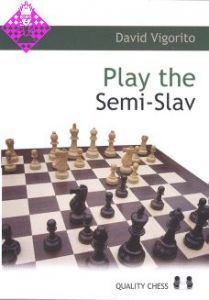 Play the Semi-Slav€24.99
Play the Semi-Slav€24.99 -
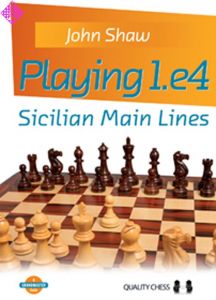 Playing 1.e4€29.95
Playing 1.e4€29.95 -
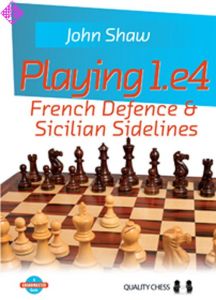 Playing 1.e4€29.95
Playing 1.e4€29.95 -
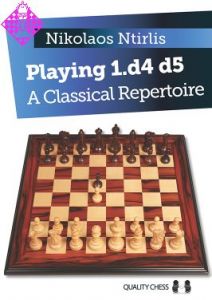 Playing 1.d4 d5€23.50
Playing 1.d4 d5€23.50 -
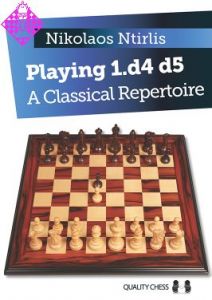 Playing 1.d4 d5€29.99
Playing 1.d4 d5€29.99 -
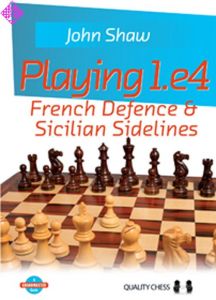 Playing 1.e4€24.95
Playing 1.e4€24.95 -
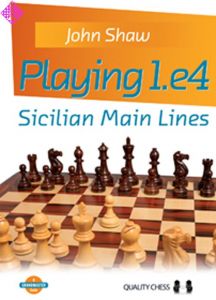 Playing 1.e4€24.95
Playing 1.e4€24.95 - More from Quality

